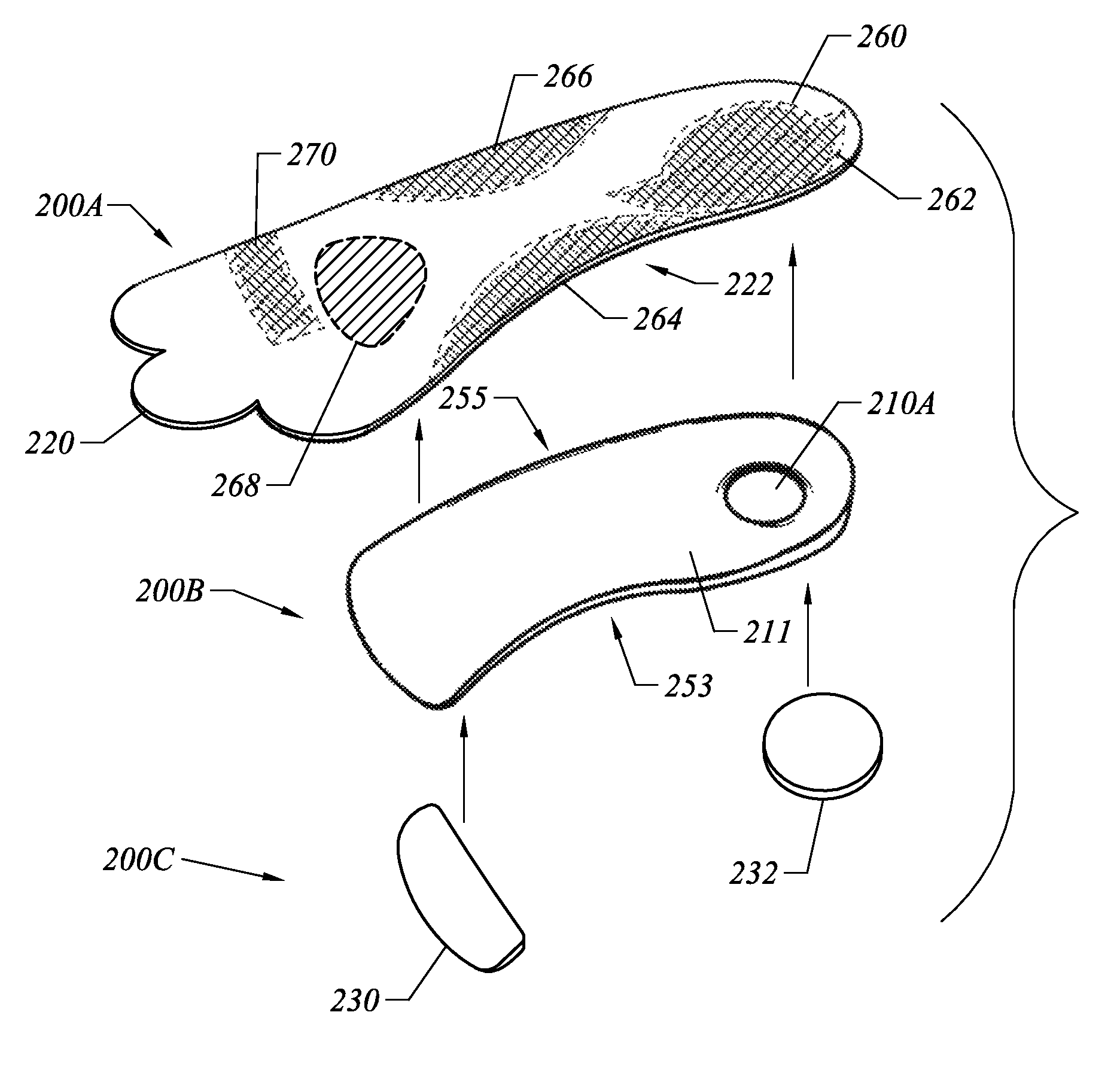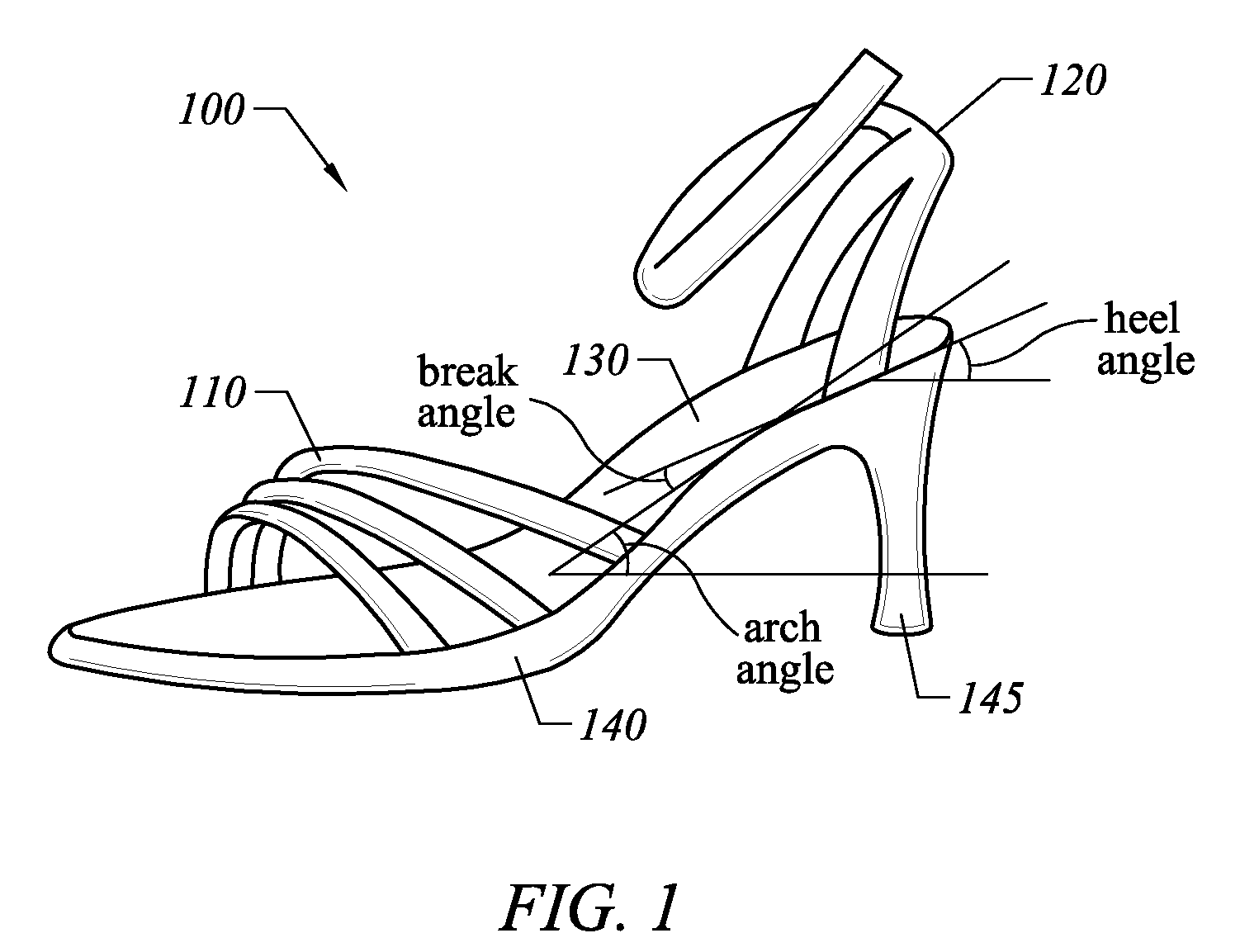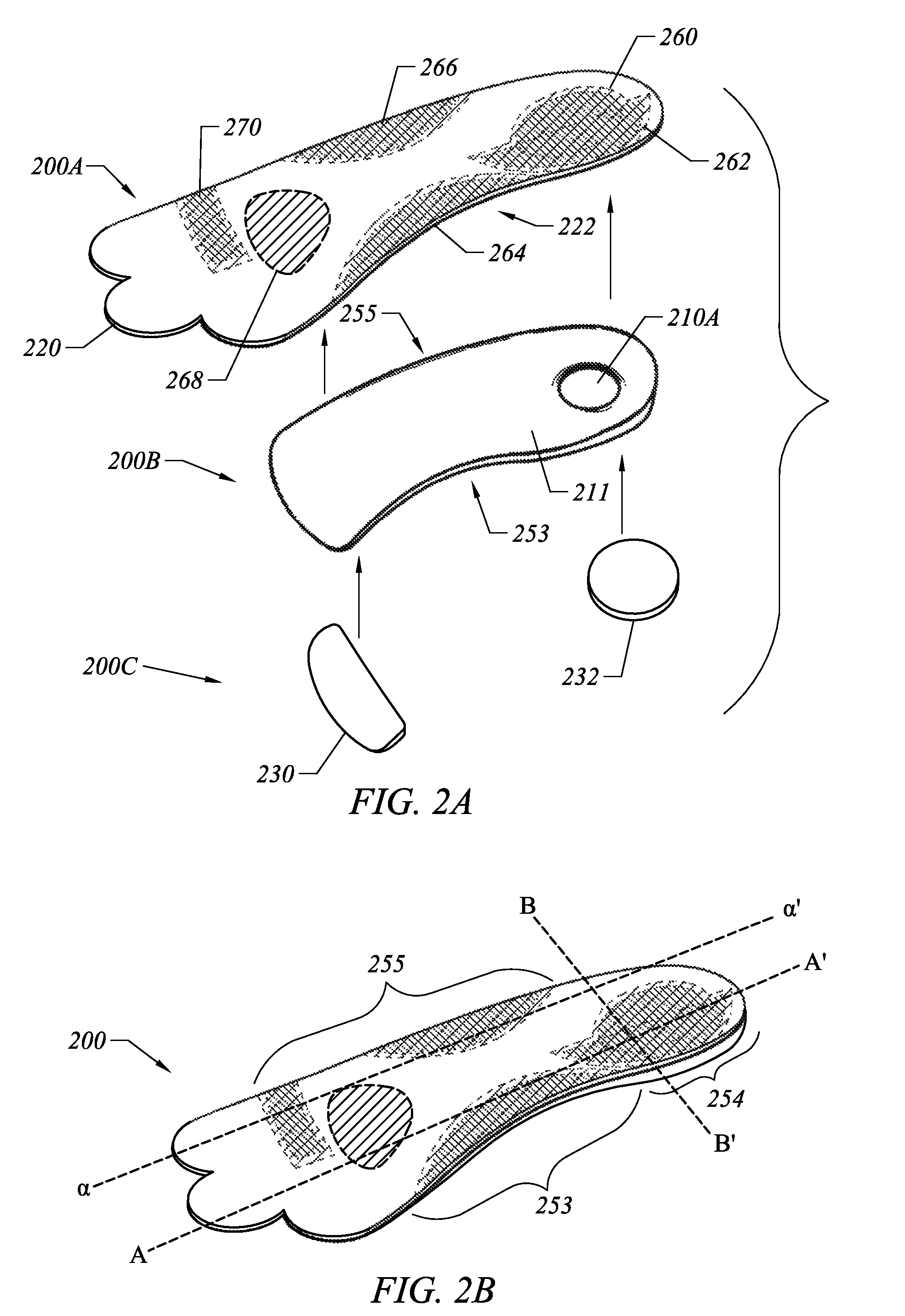Orthotic device for open shoes
an orthotic device and shoe technology, applied in the field of orthotics, can solve problems such as cushioning of the foot, and achieve the effect of maintaining correct anatomical alignment of the foo
- Summary
- Abstract
- Description
- Claims
- Application Information
AI Technical Summary
Benefits of technology
Problems solved by technology
Method used
Image
Examples
first embodiment
[0147]FIG. 13 shows a perspective view of a design for an orthotic device.
[0148]FIG. 14 shows a top view of the first embodiment.
[0149]FIG. 15 shows a bottom view of the first embodiment.
[0150]FIG. 16 shows a right-side view of the first embodiment.
[0151]FIG. 17 shows a left-side view of the first embodiment.
[0152]FIG. 18 shows a front view of the first embodiment.
[0153]FIG. 19 shows a back view of the first embodiment.
[0154]FIG. 20 shows a view of the first embodiment of the orthotic device when used in a left-side open flat shoe. Note how the orthotic device stays in place, sticking to or staying in place on the shoe, even when a person is walking or running.
second embodiment
[0155]FIG. 21 shows a perspective view of a design for an orthotic device.
[0156]FIG. 22 shows a top view of the second embodiment.
[0157]FIG. 23 shows a bottom view of the second embodiment.
[0158]FIG. 24 shows a right-side view of the second embodiment.
[0159]FIG. 25 shows a left-side view of the second embodiment.
[0160]FIG. 26 shows a front view of the second embodiment.
[0161]FIG. 27 shows a back view of the second embodiment.
[0162]FIG. 28 shows a view of the second embodiment of the orthotic device when used in a left-side open heeled shoe.
third embodiment
[0163]FIG. 29 shows a perspective view of a design for an orthotic device.
[0164]FIG. 30 shows a top view of the third embodiment.
[0165]FIG. 31 shows a bottom view of the third embodiment.
[0166]FIG. 32 shows a right-side view of the third embodiment.
[0167]FIG. 33 shows a left-side view of the third embodiment.
[0168]FIG. 34 shows a front view of the third embodiment.
[0169]FIG. 35 shows a back view of the third embodiment.
[0170]The views shown in FIGS. 13-35 are for an orthotic device for use with a left-side shoe or left foot. Views for an orthotic device for use with a right-side shoe or right foot are mirror images of the above views.
[0171]General Characteristics
[0172]In an embodiment, the layers of the various inventions described above are translucent. Further, the adhesives used, both to assemble the insoles and to provide the reusable adhesive on the lower layers, are also translucent during use of the insoles. In an embodiment, the lower layer of an orthotic device includes a m...
PUM
 Login to View More
Login to View More Abstract
Description
Claims
Application Information
 Login to View More
Login to View More - R&D
- Intellectual Property
- Life Sciences
- Materials
- Tech Scout
- Unparalleled Data Quality
- Higher Quality Content
- 60% Fewer Hallucinations
Browse by: Latest US Patents, China's latest patents, Technical Efficacy Thesaurus, Application Domain, Technology Topic, Popular Technical Reports.
© 2025 PatSnap. All rights reserved.Legal|Privacy policy|Modern Slavery Act Transparency Statement|Sitemap|About US| Contact US: help@patsnap.com



